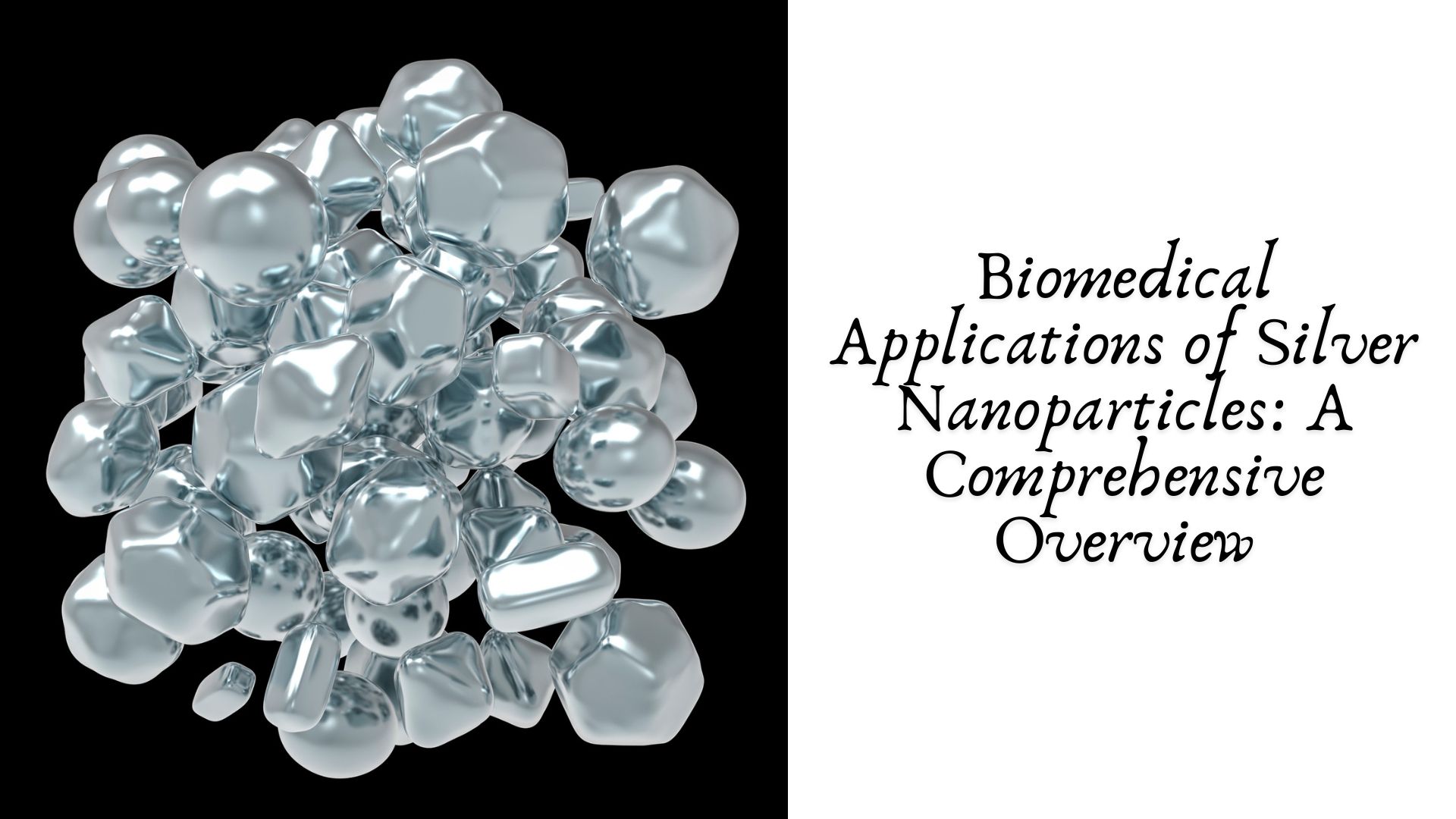Silver nanoparticles (AgNPs) have emerged as a highly promising material in the biomedical field due to their unique physical, chemical, and biological properties. Their nanoscale size imparts novel characteristics that are absent in bulk silver, such as enhanced antimicrobial efficacy, biocompatibility, and versatile functionalization capabilities. This comprehensive overview delves into the diverse biomedical applications of silver nanoparticles, exploring their roles in antimicrobial treatments, wound healing, drug delivery, diagnostics, and cancer therapy.
Antimicrobial Properties
One of the most well-known and extensively studied applications of silver nanoparticles is their antimicrobial activity. AgNPs exhibit broad-spectrum antimicrobial effects against bacteria, viruses, and fungi. Their mechanisms of action include disrupting microbial cell membranes, generating reactive oxygen species (ROS), and releasing silver ions, which interfere with cellular processes and cause cell death. This makes them valuable in various healthcare products, including coatings for medical devices, disinfectants, and antimicrobial dressings.
Applications in Medical Devices
Silver nanoparticles are incorporated into medical device coatings to prevent infections associated with implants, catheters, and surgical instruments. These coatings reduce the risk of biofilm formation and microbial colonization, thereby enhancing the safety and longevity of medical devices. For instance, AgNP-coated urinary catheters have shown significant efficacy in reducing catheter-associated urinary tract infections (CAUTIs).
Wound Dressings
Silver nanoparticles are widely used in wound dressings due to their potent antimicrobial properties and ability to promote wound healing. AgNP-based dressings not only prevent infections but also enhance tissue regeneration and reduce inflammation. They are particularly effective in treating chronic wounds, burns, and diabetic ulcers. Several commercial products, such as Acticoat and Aquacel Ag, have successfully incorporated silver nanoparticles to improve patient outcomes.
Drug Delivery Systems
Silver nanoparticles serve as efficient carriers for drug delivery due to their high surface area, ease of functionalization, and ability to penetrate biological barriers. AgNPs can be conjugated with therapeutic agents, targeting ligands, and imaging molecules to create multifunctional nanocarriers. These nanocarriers enhance the bioavailability, stability, and targeted delivery of drugs, leading to improved therapeutic efficacy and reduced side effects.
Targeted Drug Delivery
Functionalized silver nanoparticles can be engineered to target specific cells or tissues, such as cancer cells or infection sites. By attaching targeting ligands, such as antibodies or peptides, to the surface of AgNPs, researchers can achieve precise delivery of drugs to diseased cells while sparing healthy tissues. This targeted approach minimizes systemic toxicity and maximizes therapeutic benefits.
Controlled Release
Silver nanoparticles can be designed to release drugs in a controlled manner, ensuring sustained therapeutic levels over extended periods. This is particularly beneficial for chronic diseases requiring long-term treatment. The release profile can be tailored by modifying the nanoparticle composition, size, and surface properties.
Diagnostics
Silver nanoparticles are also utilized in diagnostic applications due to their unique optical and electronic properties. AgNPs exhibit strong surface plasmon resonance (SPR), which can be exploited in various biosensing platforms for the detection of biomolecules, pathogens, and disease markers.
Biosensors
AgNP-based biosensors offer high sensitivity, specificity, and rapid response times. They can be used in various diagnostic assays, including lateral flow tests, colorimetric assays, and electrochemical sensors. For example, silver nanoparticles have been integrated into pregnancy tests and glucose sensors, providing reliable and easy-to-use diagnostic tools.
Imaging
Silver nanoparticles enhance imaging techniques such as optical microscopy, computed tomography (CT), and magnetic resonance imaging (MRI). Their strong scattering and absorption properties improve contrast and resolution, enabling better visualization of biological structures and disease processes. Functionalized AgNPs can also be used as contrast agents to target specific tissues, enhancing the accuracy of diagnostic imaging.
Cancer Therapy
Silver nanoparticles have shown great potential in cancer therapy due to their ability to induce cytotoxicity in cancer cells while sparing normal cells. Their multifaceted approach to cancer treatment includes direct cytotoxic effects, drug delivery, and synergistic effects with other therapeutic modalities.
Cytotoxic Effects
Silver nanoparticles induce apoptosis (programmed cell death) and necrosis in cancer cells through multiple mechanisms, including ROS generation, DNA damage, and disruption of mitochondrial function. These effects are particularly pronounced in rapidly dividing cancer cells, making AgNPs a promising candidate for cancer therapy.
Synergistic Therapies
AgNPs can be combined with other treatment modalities, such as chemotherapy, radiotherapy, and photothermal therapy, to enhance their efficacy. For instance, AgNPs can act as radiosensitizers, increasing the sensitivity of cancer cells to radiation. Similarly, when used in photothermal therapy, silver nanoparticles absorb light and convert it into heat, selectively destroying cancer cells.
Conclusion
Silver nanoparticles have revolutionized the field of biomedicine with their versatile applications and unique properties. From antimicrobial treatments and wound healing to drug delivery, diagnostics, and cancer therapy, AgNPs have demonstrated significant potential in improving healthcare outcomes. As research progresses, further advancements in the synthesis, functionalization, and understanding of silver nanoparticles will likely unlock new possibilities and broaden their scope in biomedical applications. The integration of silver nanoparticles into clinical practice holds promise for enhancing patient care and addressing various medical challenges in the future.










